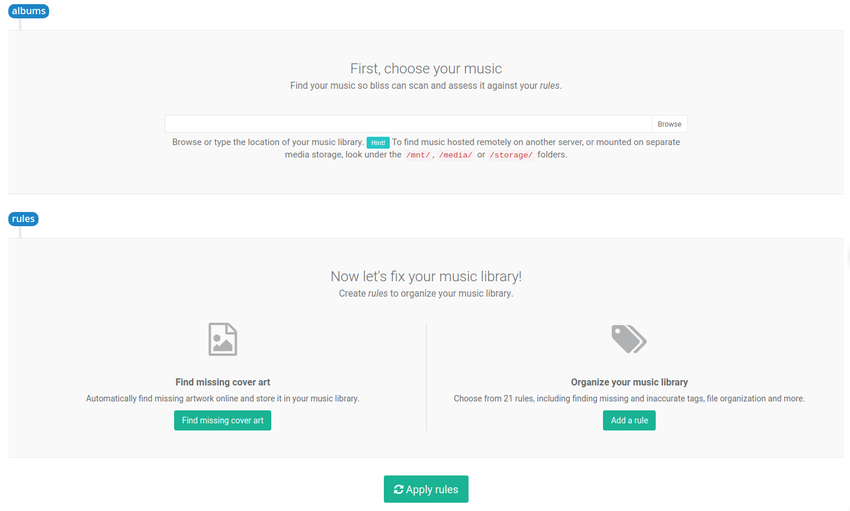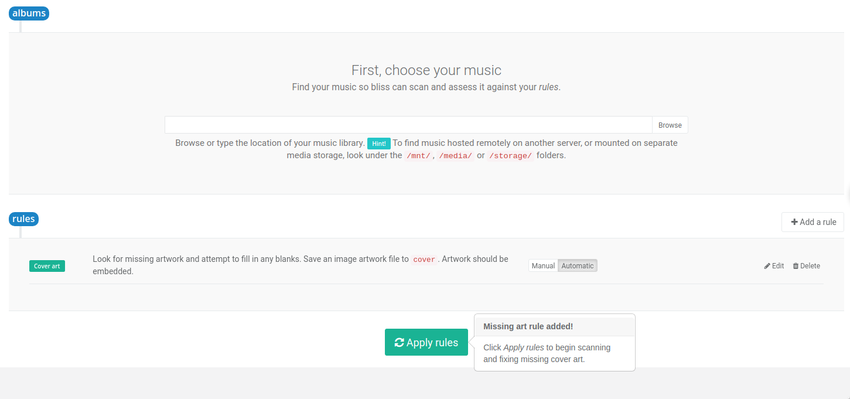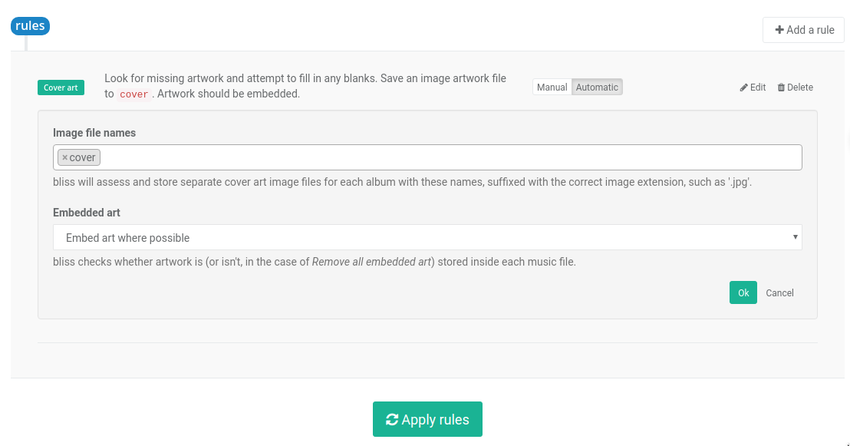Configuring bliss for the first time
Enough of the theory, let's get practical! The very first thing you'll want to do is install bliss. Download it by clicking the button below and running the installer. If you're using a Mac, you can just open the .dmg file and run that direct.
Once installed, start bliss from (Windows) the Start menu or desktop, (Mac) the Dock or the downloaded .dmg file, (Linux) the menu, desktop or the command line. Once started, visit the user interface (UI). Either click the bliss icon in the system tray or open a Web browser and point it to http://localhost:3220 ![]() (if you are running bliss on the same computer as the browser).
(if you are running bliss on the same computer as the browser).
You configure bliss using the 'settings' page of the UI. The first time bliss runs you'll get the option for a tour, on which the the settings page is automatically opened. Otherwise, click the 'cog' link at the top right . The settings page allows you to specify where your music is and allows you to specify and configure your rules.

First, locate your music. This is the root folder of all your music files. For instance, you may have your music files in folders for artists or albums. Choose the folder that is the parent of those folders. On Windows and Mac, this will be pre-populated to the default music location, but you may wish to change it. Use the 'Browse' button to navigate through the folders on the computer bliss is installed on.
Now, time to configure our first rule. I said we would find missing cover art in this quick start guide, so click the Find missing cover art button. This will automatically add and configure the Find missing cover art rule with some default settings:

You can see that, by default, the rule will be configured to embed cover art and name a cover art file as cover.jpg. It will also fix any non-compliance with this rule automatically. If you're fine with that just click the Apply rules button and bliss will begin the assessment and automatic fix cycle. If you would like to change this setup, click Edit to configure.

In the extended box there's a list of different settings that can be applied as parameters to the cover art rule. The first thing you will see is the Image file names. Here you can enter the name that will be given to each of your cover art image files co-located in each album directory. This is the first part of the file's name, the second and final part being the image type extension, such as .jpg, .gif etc. Common names for cover art image files are 'folder' or 'cover' which result in 'folder.jpg' or 'cover.jpg' or similar.
Note that the Image file names box can be left empty, which means bliss will only embed cover art inside the music files and won't add any separate image files in the album folder. Also, more than one image name can be entered, so it saves more than one file in each album folder. To separate file names, use the [TAB] or the comma key (this is to allow filenames with spaces to be entered).
Next, there's 'Embedded art'. Embedding art is, I believe, generally a good thing. I would suggest leaving this on 'Embed art where possible', but choose 'Ignore' if you prefer. If you want to eradicate all traces of embedded art, choose 'Remove all embedded art'.
There are more rules to configure, hopefully self explanatory, but for now let's move on!
Now, click the 'Apply rules' button and bliss begins the assessment and automatic fix cycle.
